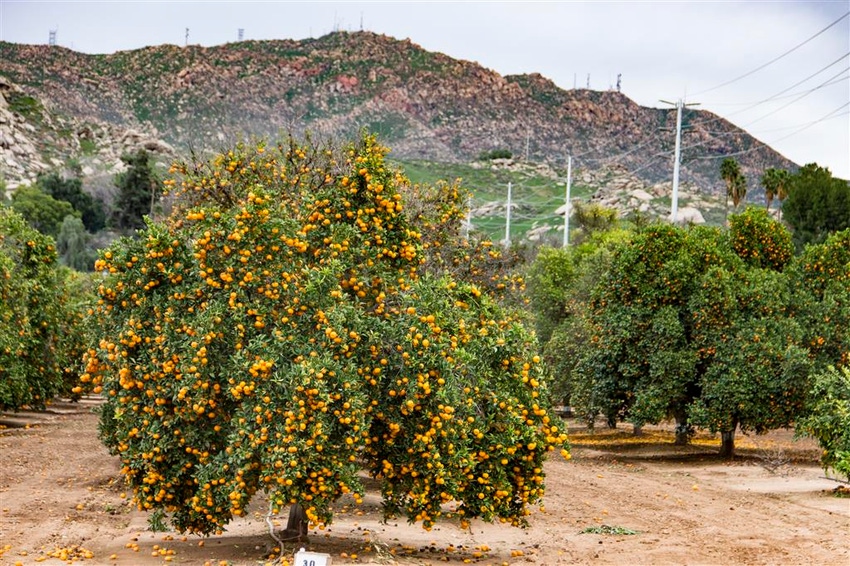
Citrus budwood at a federal quarantine facility in Riverside, Calif. was recently destroyed after testing positive for the deadly bacterial disease Huanglongbing (HLB).
According to Mary Palm, national coordinator for citrus pest programs with the U.S. Department of Agriculture, mandarin budwood imported under permit from India was being studied at the USDA germplasm facility when the bacterium that causes HLB, a disease commonly known as citrus greening, was discovered.
The USDA’s Agricultural Research Service (ARS) runs the National Clonal Germplasm Repository for citrus and dates in Riverside. The location is valuable to the citrus industry because of the work conducted at the nearby University of California, Riverside campus.
The location the budwood was kept in an insect-resistant research facility. As such, there is no cause for concern that the disease has or will spread outside of the facility, Palm says.
Palm says the discovery is essentially a non-issue because the disease was imported under strict quarantine conditions and contained within a quarantine lab. It was because of recent discoveries of the citrus disease in nearby Los Angeles County and the heightened public awareness of citrus greening disease that Palm says the USDA opted to be forthcoming with news of the discovery.
“The take-home message here is this is a good example of how our programs work,” Palm says, pointing to the various quarantine protocols and reasons officials study the various plant materials.
Other budwood imported with the same shipment from India included what researchers believe might be highly-valuable resistant pomelo budwood which has tested negative for HLB.
One way USDA and cooperators stay at the forefront of keeping the U.S. citrus industry competitive is by obtaining potentially valuable germplasm from around the world and offering it in small quantities to researchers for testing.
According to Palm, the testing and research of citrus materials brought into the national clonal germplasm repository is designed to provide clean, commercially-viable citrus materials for citrus growers.
The budwood in question was initially discovered by a USDA researcher touring India for citrus diseases and potential examples of resistant plant materials. Palm says the researcher discovered pomelos in India that could potentially be resistant to HLB.
“Should these pomelos be free of HLB this could really become a game-changer for the citrus industry,” Palm said.
Numerous safeguards are already in place to prevent potential spread of plant diseases during transport into the United States. Safeguards taken at the USDA quarantine facility include positive pressure air curtains and insect screening on all air vents as the location is within southern California’s quarantine zone for the Asian citrus psyllid, the pest responsible for vectoring HLB.
For the latest on western agriculture, please check out Western Farm Press Daily and receive the latest news right to your inbox.
About the Author(s)
You May Also Like






